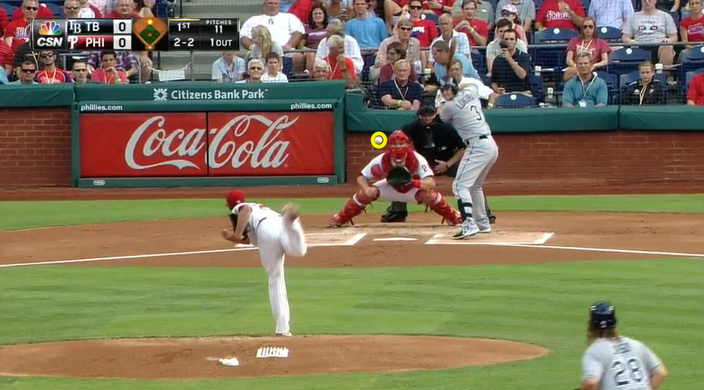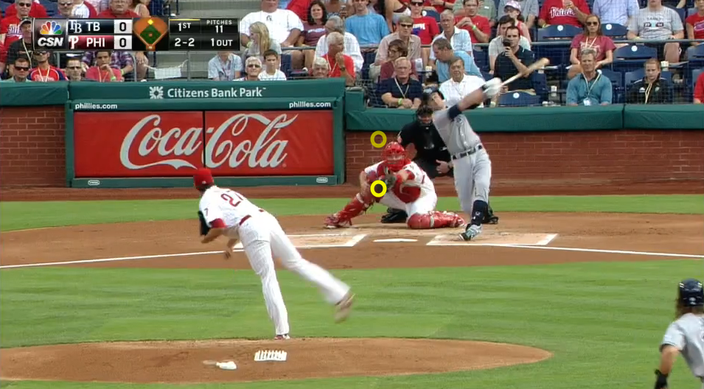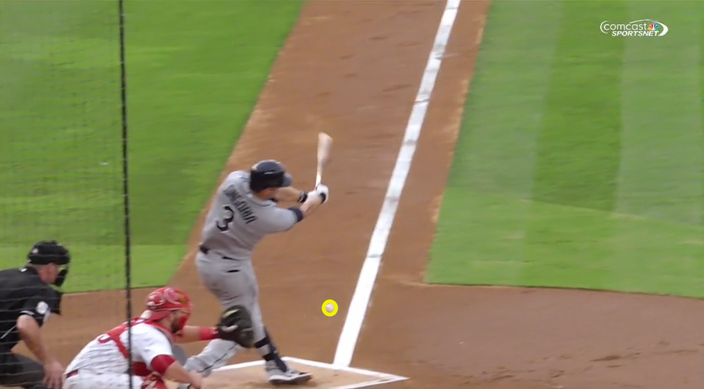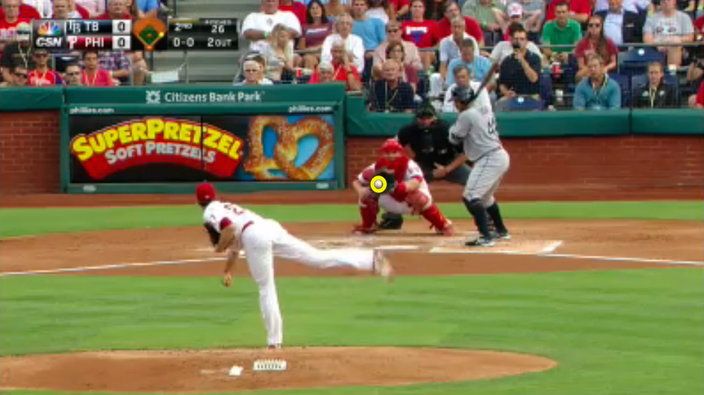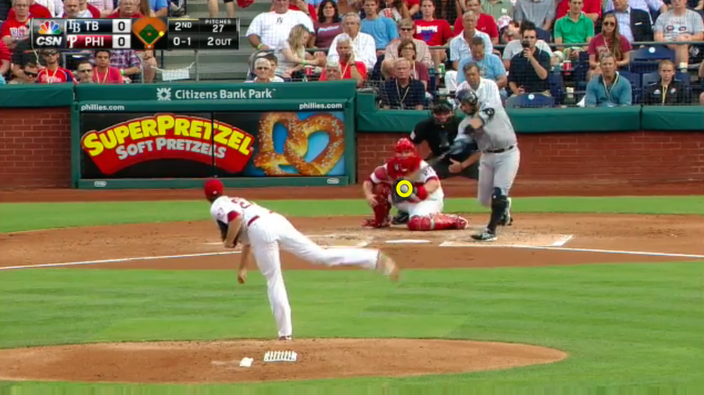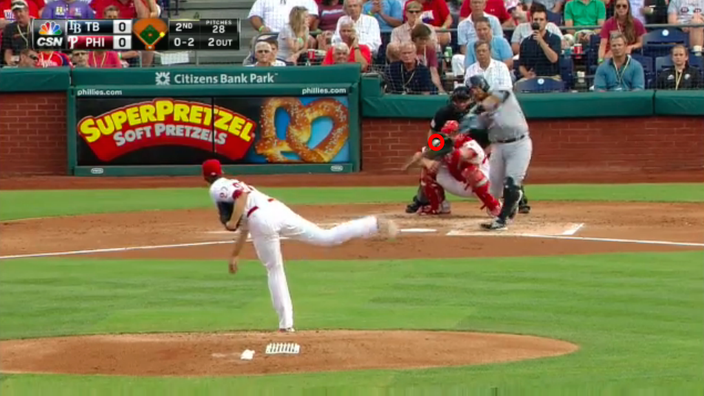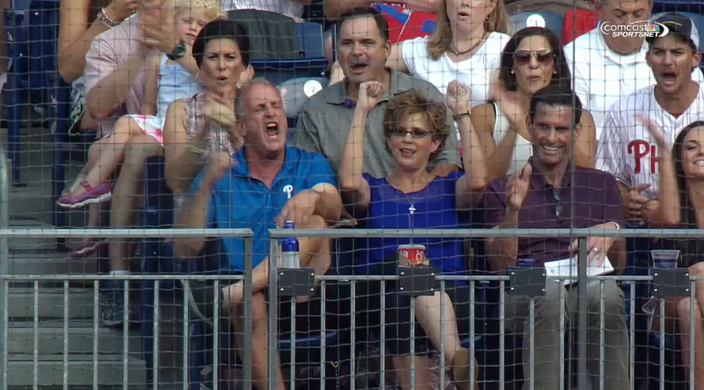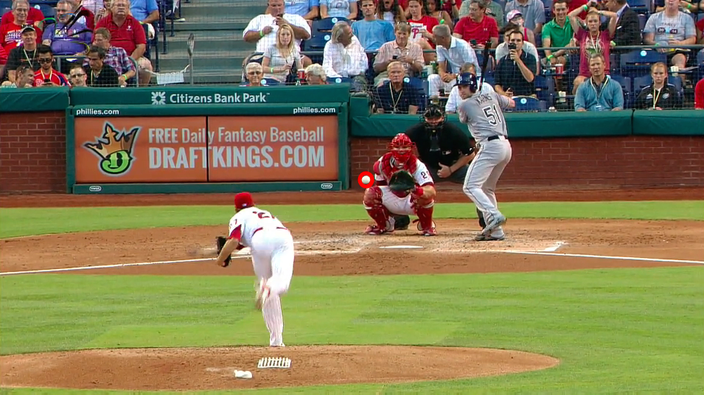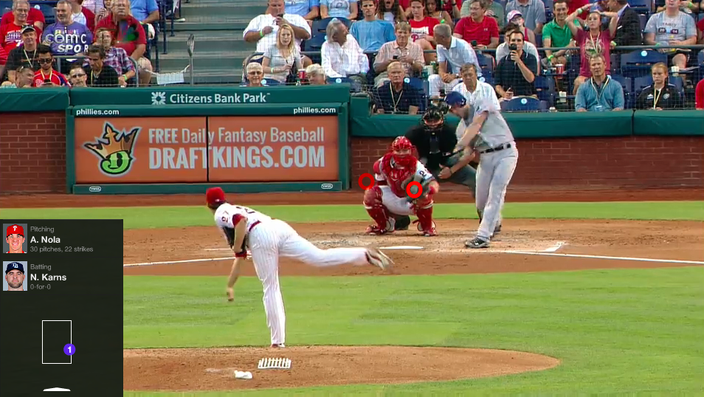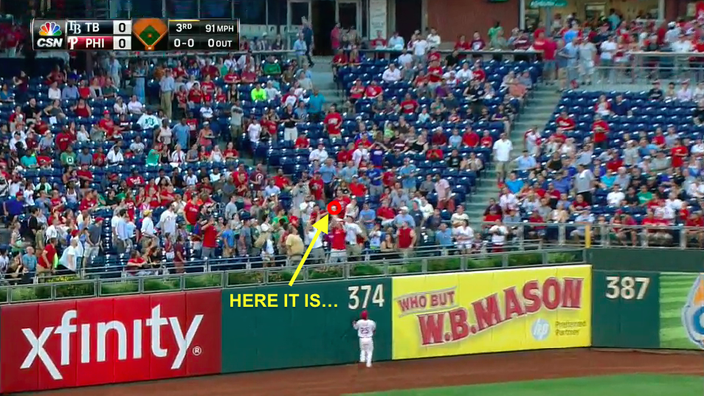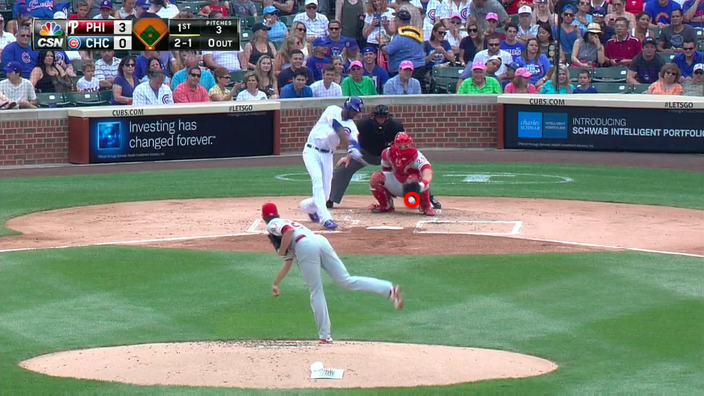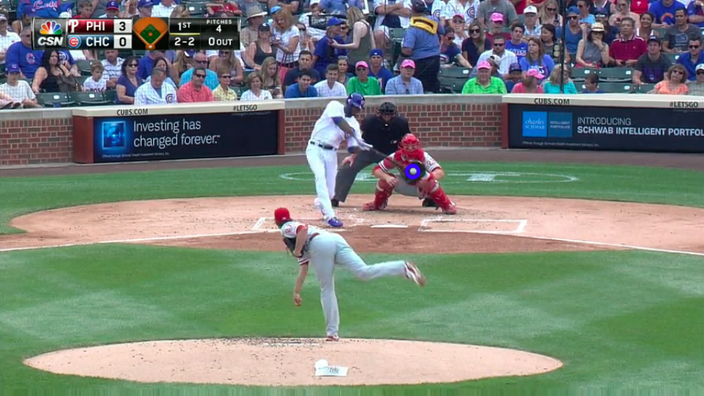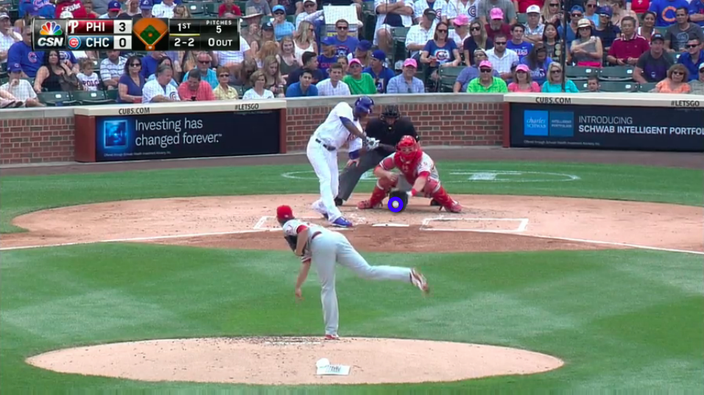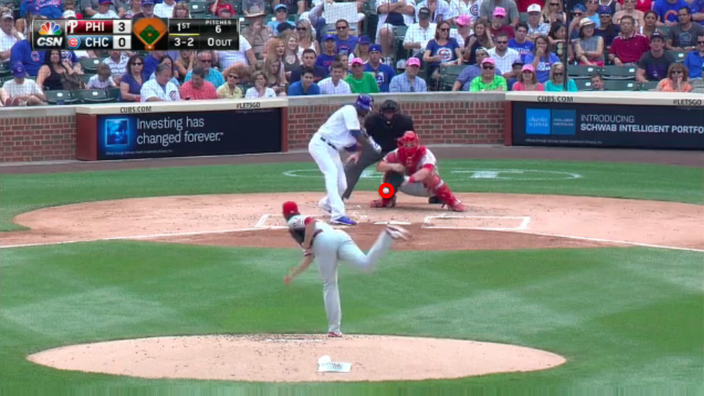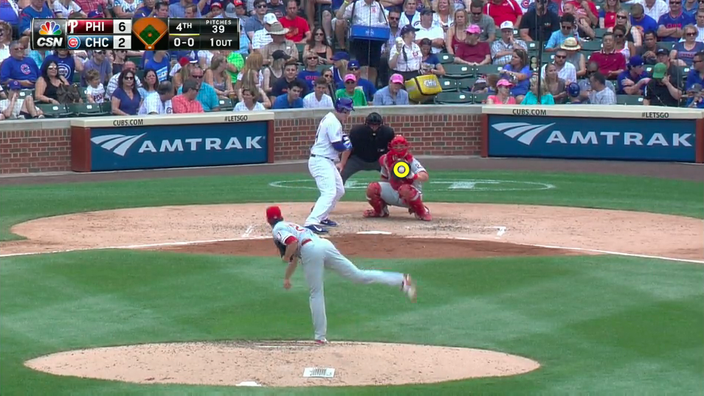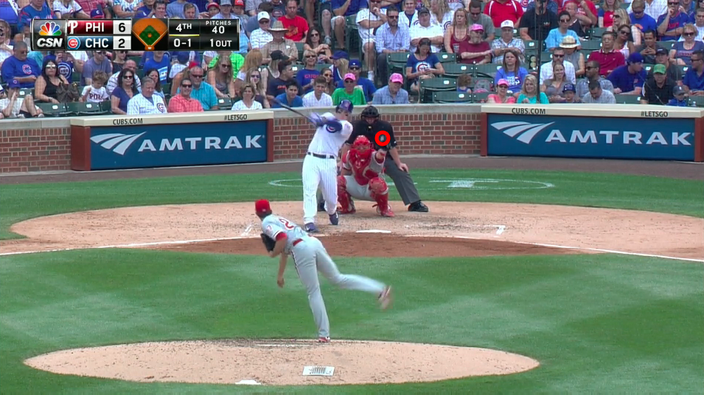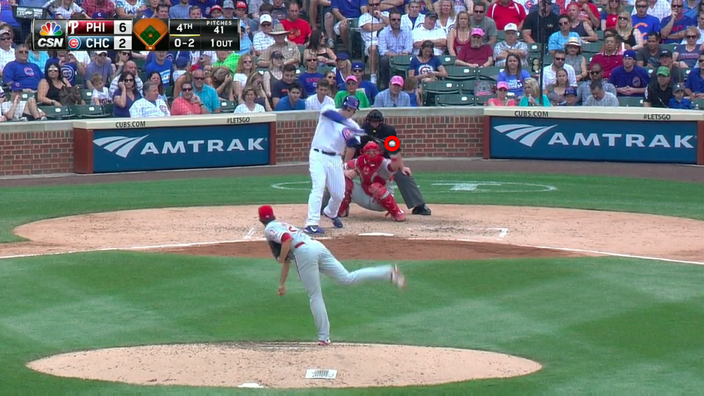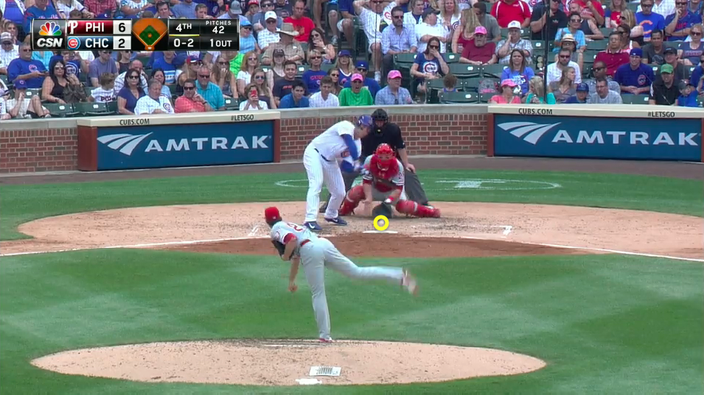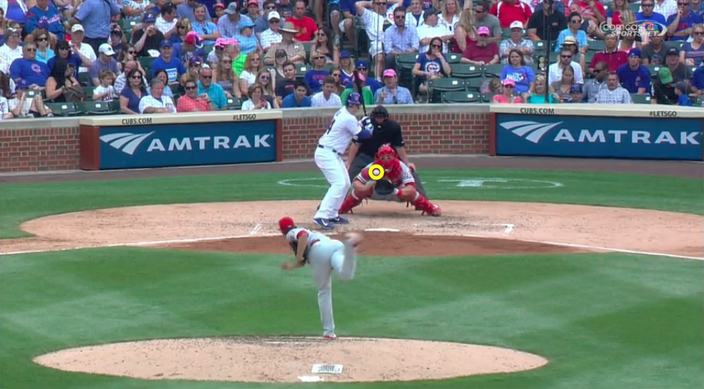
July 27, 2015
Now that we've seen two starts -- 13.2 innings, or 180 pitches, to be exact -- of Aaron Nola pitching at the big league level, it seemed like the right time to break down some of his pitches and examine why he has been so effective in his first week in Philadelphia.
Nola, who picked up his first win Sunday as the Phillies capped off a series sweep of the Cubs in Chicago with an 11-5 victory, is 1-1 with a 3.29 ERA and a 0.95 WHIP. And while those numbers are great, there are others that suggest the 22-year-old rookie will come down to earth soon.
First, Nola's BABIP (.206) is almost identical to opposing hitters' average against him (.204). To put it simply, four out of every five batters that have put the ball in play vs. Nola have been retired. That's a pretty low number, and suggests that there has been some luck involved when it comes to keeping runs off the board. Another such number is Nola's 90.9 LOB%.
Considering the league average for pitchers' BABIP is .300 and LOB% is around 70 percent, Nola's ERA could easily be much higher than it is.
So why isn't it?
It's a combination of things. And yes, that's the easy, cop-out answer. But that doesn't make it wrong. What has made Nola so effective, at least to this point, is that he doesn't have just one "thing." He does many things well.
And it all starts before Nola even enters his windup.
For a young pitcher, Nola is supremely confident in all four -- yes, he has four -- of his pitches. Better yet, he can locate each and is willing to throw it in any situation.
So before we get into how he does that, let's take a look at what Nola throws.
Nola has two fastballs, the first of which is a straightforward heater and his most-used pitch. (34.4 percent usage rate). With an average velocity of 91.6 mph and a max of 93.8 mph, Nola has allowed more hits (including two home runs) with his fastball than any other pitch. Still, it can be pretty nasty.
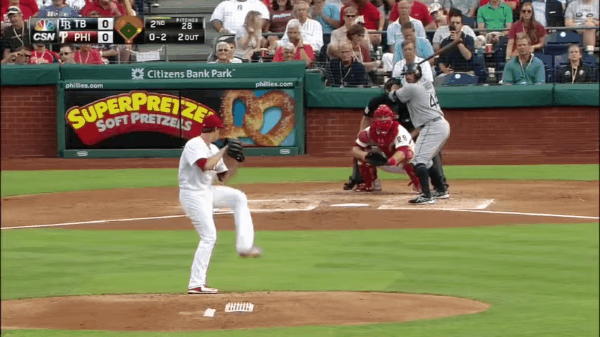
And while he can use his fastball to get hitters to swing and miss, its most important purpose is setting up the rest of his pitches.
Nola's second-most-used pitch is his two-seam fastball, a nasty little number that looks like his standard fastball, but is slightly slower (90.1 mph average) and comes with some extra movement that can make a hitter look silly.
Here's Nola using to get his first big-league strikeout on Tuesday night against the Rays' Steven Souza Jr.
The first of many. #NolaDay http://t.co/nzIwPy9QUd pic.twitter.com/7ebCnGgHio
— Phillies (@Phillies) July 21, 2015
For context, Nola started off Souza, who struck out four times in the game (three against Nola), with a pair of fastballs at 94 mph before coming back with the two-seamer on the outside corner at 91 mph.
This has easily been Nola's best pitch so far. He's been making professional hitters look silly, as they're hitting .118 against the curve while making contact on just 54.6 percent of swings.
Here's Anthony Rizzo of the Cubs making contact, just not with his bat.

That's just nasty.
And now we'll give Cubs rookie Kris Bryant a try:
#Whiff pic.twitter.com/N8IUdgcIQF
— Phillies (@Phillies) July 26, 2015
And sometimes, they don't even bother swinging...
#Philthy #NolaDay pic.twitter.com/ja3S77XJNK
— Phillies (@Phillies) July 22, 2015
So as you can see, Nola's breaking ball is his best out-pitch, but he also isn't afraid to throw it first pitch to keep hitters off balance. In Sunday's win over the Cubs, the righty starter eight of the 28 batters he faced with an off-speed pitch (six curves and two changeups).
The Phillies changeup master, Cole Hamels, did his thing Saturday, earning his first no-hitter in a 13-strikeout gem. Nola, unlike Hamels, doesn't rely on his changeup to get a lot of outs. It's his least used -- and arguably his least effective -- pitch. But that's less of a knock on the pitch and more of a statement about the quality of his other three pitches.

The one thing that Nola does much better than his more experienced teammate is induce ground balls. Whereas Hamels has a tendency to get a lot of long flyball outs, Nola is much more likely to force hitters into keeping the ball on the ground. That's an important facet of the youngster's game, especially in a hitter-friendly park like Citizens Bank Park.
Now, let's take a look at some specific at-bats to see how Nola uses his command and his confidence in his pitches to keep hitters off-balance and guessing.
In his debut against the Rays, Nola pitched masterfully -- with one exception, which we'll get to later -- and you didn't need to look any further than his first-inning strikeout against Evan Longoria for a perfect example of how the rookie mixes his pitches.
Here's how the at-bat unfolded:
That final strike was a thing of beauty, as Nola had Longoria completely fooled. Here's a look at where that pitch started:
Another great example of Nola confusing Rays' hitters came in the second, when he struck out Renee Rivera to end the inning on three pitches. Basically, he did the opposite of what a hitter is taught to expect, which is that the fastball sets up the off-speed stuff.
But not with Nola. Take a look:
First, Nola got Rivera looking on the first-pitch curve.
It wasn't all strikeouts all the time for Nola in his debut, however. On the first pitch of the third inning, he gave up a home run to opposing pitcher Nathan Karns.
From the press box at Citizens Bank Park, it looked as though Nola just grooved a fastball right down the middle, thinking that an American League pitcher didn't stand much of a chance. But that wasn't entirely the case.
Nola made a pretty decent pitch to Karns. It looked like a two-seam fastball that wasn't up in the zone and was tailing in on the batters hands.
One of the things that became immediately apparent from the outset on Sunday was that Nola learned a thing or two in his first start. Against the Rays, Nola fell behind leadoff hitter John Jaso, 2-1. The next pitch was a fastball right down the middle, which Jaso lined off the wall in deep right-center field.
Against the Cubs, however, Nola didn't repeat his mistake when he found himself in the same situation. Instead, he kept his two-seam fastball away from the left-handed hitter.
Finally, lets look at one of Nola's best at-bats in his two games with the Phillies. It came in the fourth inning of Sunday's win over the Cubs and ended with Rizzo striking out on a curveball that wound up hitting him in the leg.

But let's see how it got to that point and what Nola was able to do to keep Rizzo, one of the best young hitters in the National League, so perplexed.
Nola started the at-bat with the same pitch he would use to end it, a curveball. Rizzo took it for a first-pitch strike.
If Nola can keep controlling and mixing his pitches like this, there's no reason to think he can't be a mainstay atop the Phillies rotation.
